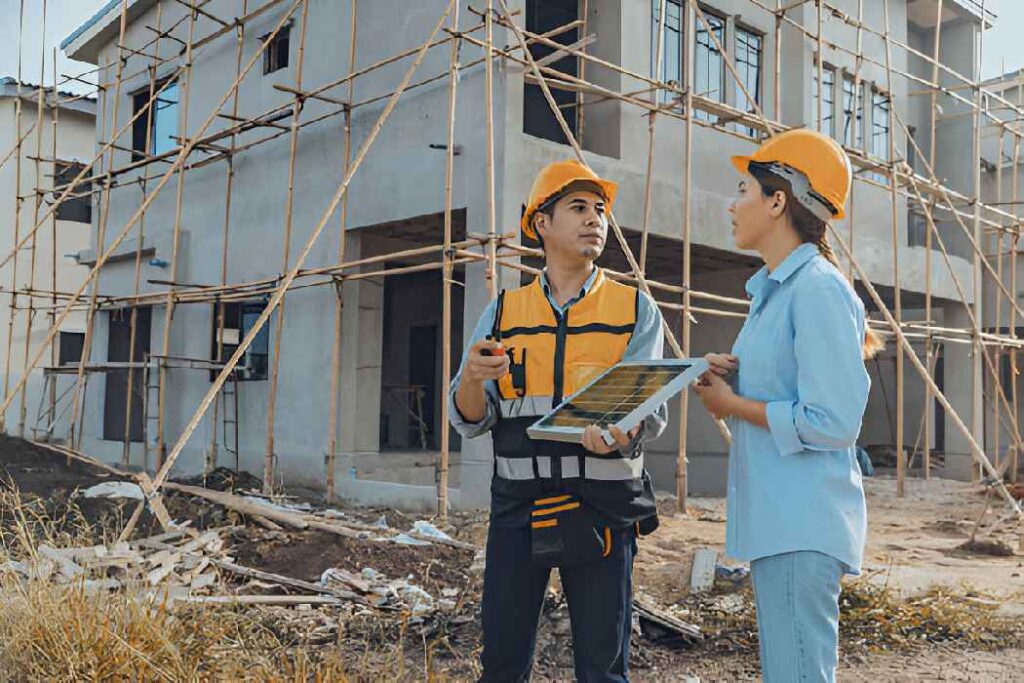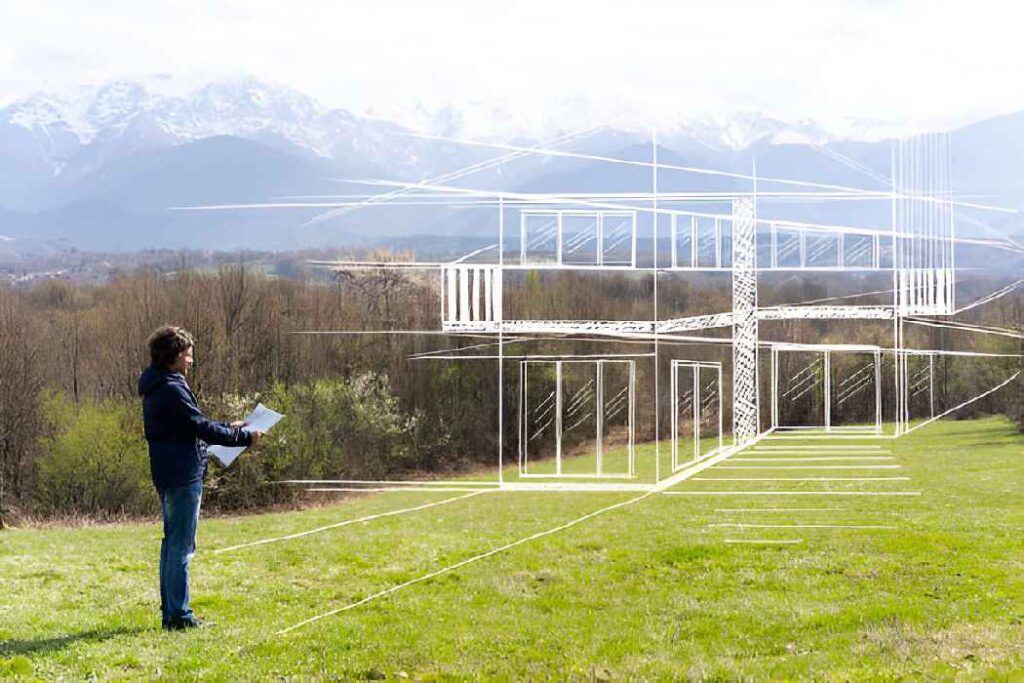Understanding Construction Loan Rates: A Comprehensive Guide
Construction loans are a pivotal aspect of the building and renovation process, allowing homeowners and builders to finance projects from the ground up. However, understanding the intricacies of construction loan rates can be daunting. This article aims to break down what construction loan rates are, the factors influencing them, the different types of construction loans available, and how to effectively compare rates to ensure you get the best deal.

What are Construction Loan Rates?
Definition and Overview of Construction Loan Rates
Construction loan rates refer to the interest rates set by lenders for loans specifically intended to cover the costs associated with building a home or undertaking substantial renovations. These rates can vary significantly depending on several factors, including the type of loan and the borrower’s financial circumstances.
Unlike traditional mortgages, construction loans typically have short terms, lasting anywhere from six months to a few years. During this period, borrowers usually only pay interest on the funds drawn from the loan to pay contractors and suppliers. This structure allows for more flexibility, as it aligns with the staggered nature of construction projects, where funds are needed at different stages rather than all at once.
Importance of Construction Loan Rates in Building Projects
The interest rate on a construction loan plays a crucial role in determining the overall cost of a project. Even a small difference in the rate can lead to significant variations in total repayment amounts over the life of the loan. For instance, a rate that is just a quarter of a percentage point lower can save borrowers thousands of dollars in interest payments, making it essential to shop around and compare offers from various lenders.
Understanding the rate will help borrowers better assess their budget and financial planning throughout the construction process. A lower rate can free up more funds for construction and potentially lead to better selections of materials or design upgrades. Additionally, being aware of the nuances of construction loan rates can empower borrowers to negotiate better terms, such as lower fees or more favorable draw schedules, which can significantly impact the financial health of a building project. This knowledge can also help in avoiding common pitfalls, such as underestimating the total cost of construction or overextending one’s financial capabilities.
Factors Influencing Construction Loan Rates
Economic Conditions and Construction Loan Rates
Construction loan rates are closely tied to the overall economic environment. Interest rates fluctuate based on several economic indicators, including inflation, unemployment rates, and the Federal Reserve’s monetary policy. When the economy is strong, rates tend to rise, while in times of economic downturn, rates may decrease to stimulate borrowing.
Investors and lenders are generally more risk-averse during uncertain economic times, which can lead to tighter lending standards and potentially higher rates for borrowers seeking construction loans. Additionally, global economic factors, such as trade tensions or geopolitical instability, can also impact domestic interest rates, creating further fluctuations in the construction loan market. For instance, if inflation rises due to increased costs of materials or labor, lenders may preemptively raise rates to mitigate potential losses, making it crucial for borrowers to stay informed about both local and global economic trends.
Credit Score and Its Impact on Construction Loan Rates
A borrower’s credit score is one of the most significant factors in determining the interest rate on a construction loan. Lenders assess credit scores to gauge the risk of lending money to an individual. A higher credit score indicates a responsible borrowing history and can lead to lower interest rates.
Conversely, borrowers with lower credit scores may face higher rates or even be denied financing altogether. It is advisable for potential borrowers to review their credit history and take steps to improve their credit scores before applying for a construction loan. This can include paying down existing debts, ensuring timely payments, and correcting any inaccuracies in their credit reports. Moreover, some lenders may offer programs specifically designed for first-time borrowers or those with less-than-perfect credit, providing alternative pathways to secure necessary funding.

The Role of the Construction Project in Determining Loan Rates
The specific details of the construction project itself can influence loan rates. Lenders evaluate the scope, location, and complexity of the project as part of their risk assessment. A well-defined project, located in an area with stable real estate values, is generally considered less risky, which can result in more favorable loan rates.
Moreover, the anticipated resale value of the completed project might also be a factor. Projects with higher projected resale values may attract lower interest rates, as lenders perceive them as a lower risk. Additionally, the experience and track record of the builder or developer can play a crucial role in the lender’s decision-making process. If the builder has a history of successful projects and timely completions, lenders may feel more confident in offering competitive rates. Furthermore, factors such as local zoning regulations, environmental assessments, and community development plans can also influence the perceived risk of the project, ultimately impacting the terms of the construction loan. Understanding these elements can empower borrowers to present a more compelling case to lenders when seeking financing.
Types of Construction Loans and Their Rates
Construction-to-Permanent Loans
Construction-to-permanent loans, often referred to as “single-close” loans, convert from a construction loan to a permanent mortgage after the construction phase is complete. This streamlining can help borrowers save on closing costs and secure a more favorable rate if interest rates rise during construction.
Typically, these loans feature variable rates during the construction phase, which can transition into fixed rates once the project is completed. This flexibility allows borrowers to manage their finances more effectively, as they can take advantage of lower initial rates while construction is ongoing. Additionally, many lenders offer options for interest-only payments during the construction period, which can further ease the financial burden on borrowers until they move into their new home.
Stand-Alone Construction Loans
Stand-alone construction loans are short-term loans that cover construction costs. Investors must pay off this loan in full before securing a mortgage to finance the home post-construction. This means borrowers may face double closing costs.
Rates on stand-alone loans can be higher than those on construction-to-permanent loans, largely due to the additional risk lenders face during the transitional phase of financing. Furthermore, these loans typically require a detailed construction timeline and budget, as lenders want to ensure that the project will be completed on time and within the estimated costs. Borrowers should be prepared for a rigorous approval process, which may include providing documentation of contractor credentials and project plans to mitigate risks for the lender.
Renovation Construction Loans
For homeowners looking to renovate their existing homes, renovation construction loans are tailored to meet those needs. These loans integrate the costs of purchasing a property and renovating it into a single mortgage.
Interest rates for renovation loans often align with conventional loans but may vary based on the extent of the renovations and the property’s overall valuation post-renovation. It is essential for borrowers to have a clear plan and budget in place to ensure they secure the best possible rates. Additionally, many lenders require a detailed renovation plan, including contractor estimates and timelines, to assess the viability of the project. This thorough vetting process not only helps protect the lender’s investment but also provides homeowners with a clearer understanding of the financial implications of their renovation projects, ensuring they can achieve their desired results without overspending.
How to Compare Construction Loan Rates
Understanding the Annual Percentage Rate (APR)
When comparing construction loan rates, one of the most crucial metrics to consider is the Annual Percentage Rate (APR). The APR represents the total cost of borrowing on an annual basis, including the interest rate along with any associated fees.
By focusing on APR, borrowers can get a clearer picture of the total financial burden over the life of the loan, making it easier to compare different loan offers more accurately.
Evaluating Loan Terms and Conditions
Beyond just rates, understanding the terms and conditions of each loan is vital for making an informed choice. Factors such as the loan repayment schedule, penalties for early repayment, and any flexibility in terms can significantly impact the overall cost and convenience of a loan.
Potential borrowers should ensure they are clear on all aspects of the loan conditions before making a decision, as hidden terms could lead to unexpected costs down the line.
The Role of Lender Fees in Total Loan Cost
Lender fees, also known as closing costs, can vary widely between lenders and can significantly affect the overall cost of a construction loan. These fees may include origination fees, appraisal fees, inspection fees, and more.
It’s important for borrowers to ask for a detailed breakdown of all expected fees to fully understand the total cost of the loan. Comparing these fees alongside interest rates can provide a comprehensive view of the best available options for financing a construction project.
In conclusion, understanding construction loan rates involves examining various factors from economic conditions to personal credit scores. By comprehensively evaluating the types of loans available and how to compare rates effectively, borrowers can navigate their financing options successfully and set themselves up for a successful construction project.

FAQ’s
A construction loan is a short-term loan used to finance the building or renovation of a home or property.
Construction loan rates are typically higher than standard mortgage rates due to the increased risk involved.
Rates are influenced by the borrower’s credit score, project scope, and the lender’s risk assessment.
Yes, but most construction loans have variable rates that adjust based on market conditions during the loan term.
Improve your credit score, choose a shorter loan term, and shop around for competitive lender offers.








